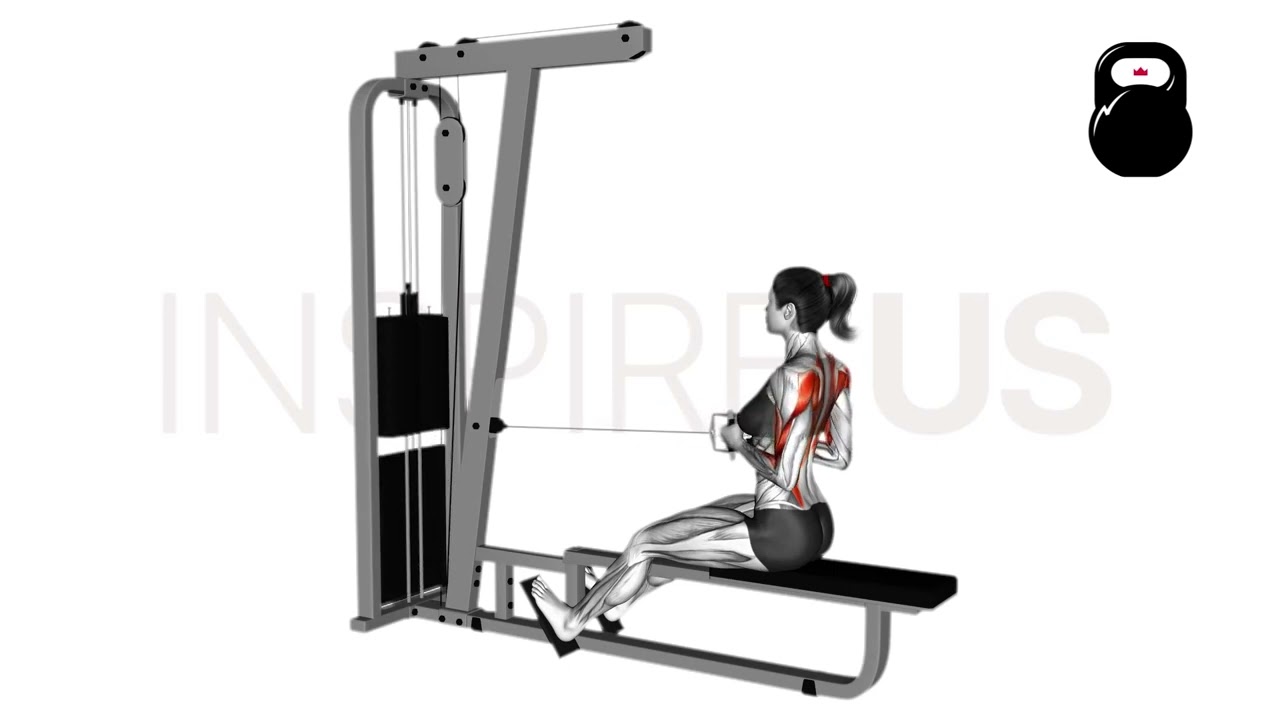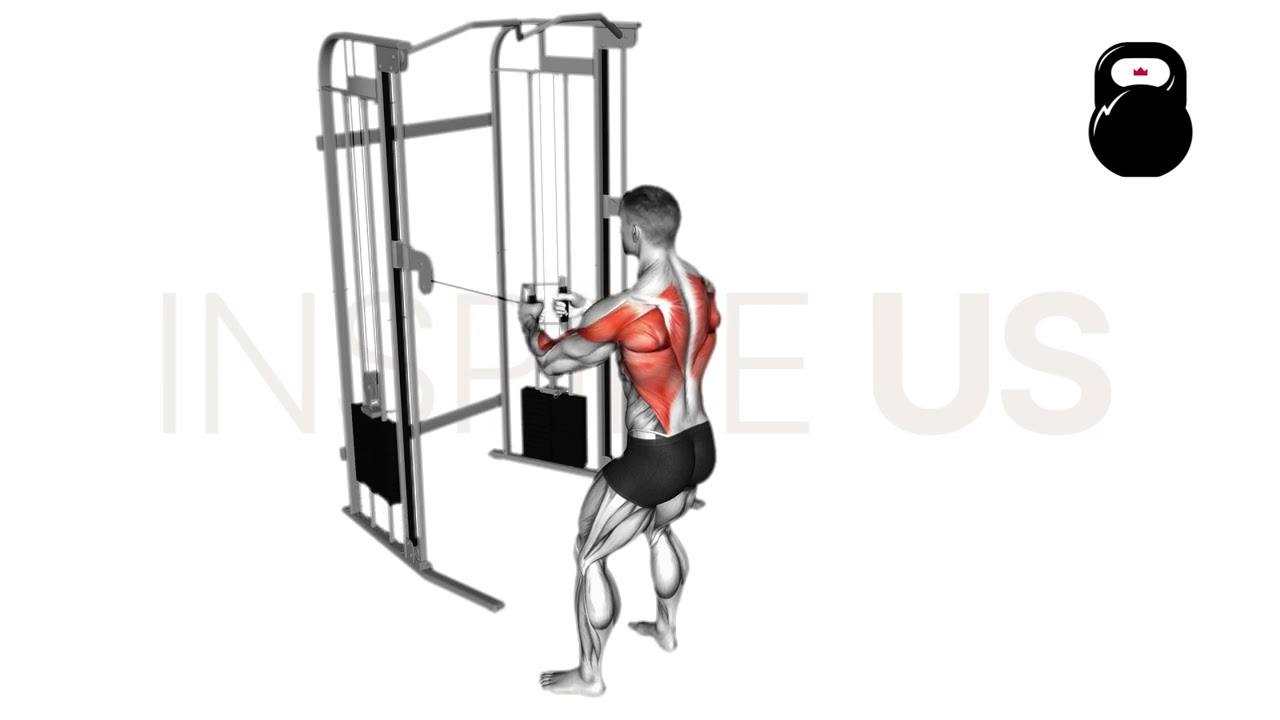Cable Machine Rows: Muscles Worked and More
Cable rows are a machine-based compound horizontal pulling movement most often performed with the use of its own dedicated seated cable row machine.
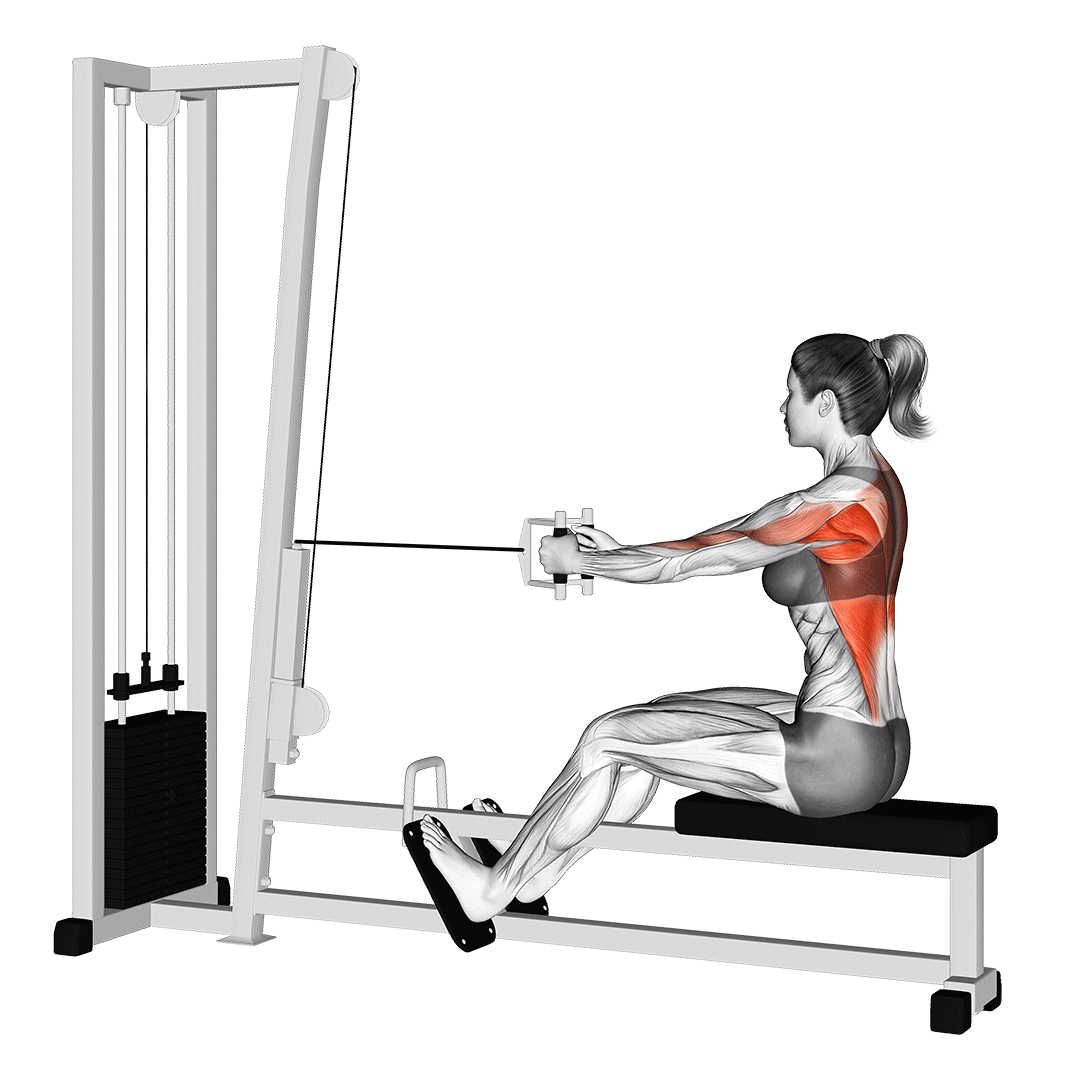
However, in a pinch, an ordinary adjustable cable machine may also be used as a substitute.
Regardless of whether a cable row machine or a cable tower, much the same muscles, movement pattern and intensity are involved.
In actual programming, cable machine rows are frequently performed as either a primary or secondary compound movement in back-focused training sessions.
They are considered to be of particular note for their excellent loading capacity, comprehensive development of the entire back and for being among one of the best horizontal pulling movements one can perform outside of free weight exercises.
Because of how much variability one can have when performing rows with an adjustable cable machine, this article is specifically geared towards a bilateral cable rowing exercise performed with a pronated grip in a seated or kneeling position.
The angle of resistance (and pulley) should be parallel with the center of the torso, with the lower back and legs kept immobile.
How to Do Rows With a Cable Machine or Cable Row Machine
If performing cable rows with a dedicated cable row machine, the lifter need only sit within the machine, place their feet against the footrests and grip the handle at arms length.
However, if using a cable machine, the lifter will need to position a bench or chair a sufficient distance away from the cable pulley to maintain tension even at the start of the repetition. The pulley itself must be parallel with the chest, a straight bar or pull-up bar handle attached.
Regardless, once seated with the handle held in an overhand grip with both hands slightly wider than shoulder-width apart, the lifter will then roll their shoulders into a neutral position and partially depress their scapula.
The torso should be either vertical in angle or leaning slightly backwards, with the core lightly contracted and the head aligned over the chest, facing immediately forwards.
Now positioned appropriately, the lifter then squeezes their lats and pulls the handle towards their chest, aiming to bend their elbows besides and behind the body as they keep their torso stationary. As the handle approaches the body, the scapula must also retract, maximizing back muscle contraction.
Once the handle is touching the torso (or nearly so), the lifter then slowly releases tension in their scapula and elbows as the resistance of the cable extends their arms back into the starting position.
With the arms fully extended and the scapula relaxed, the repetition is considered to be complete.
Sets and Reps Recommendation:
If possible, lifters will want to aim for a moderate or somewhat heavy load with cable machine rows. This will allow them to take full advantage of their many benefits.
2-4 sets of 6-12 repetitions will be the ideal session volume for general training purposes.
What Muscles Do Cable Machine Rows Work?
Cable machine rows are a compound movement, meaning that multiple joints are involved - necessitating the recruitment of multiple muscle groups as well.
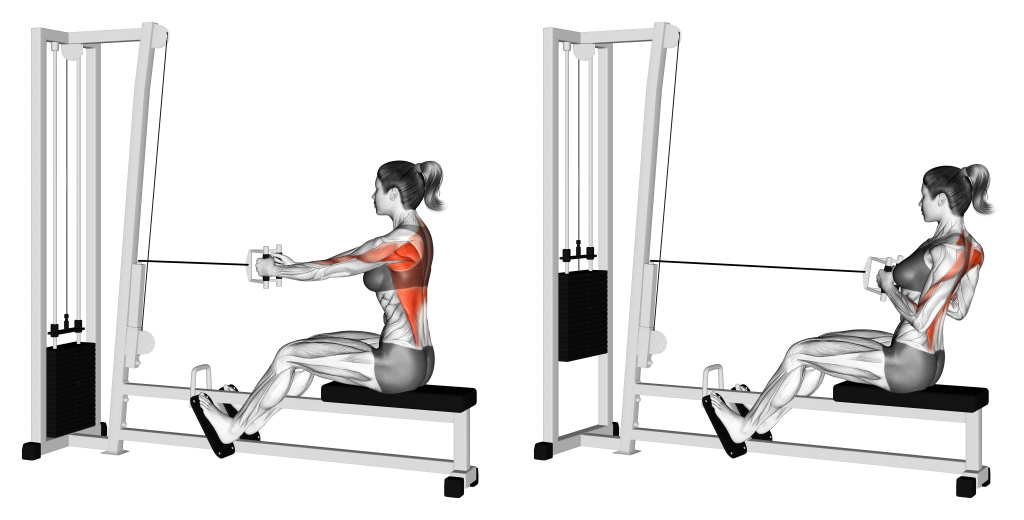
These muscles are divided according to the role they play within the exercise, with “mover” muscles playing an important dynamic function, and “stabilizer” muscles mainly working in a static capacity. As a general rule, mover muscles will be developed to a greater extent than stabilizer muscles.
Mover Muscles
In terms of primary mover muscles, cable machine rows will target the latissimus dorsi, lower trapezius, and rhomboids to the greatest extent.
Alongside these are the teres muscles, the infraspinatus and (depending on grip width and orientation) the biceps brachii as well.
Stabilizer Muscles
Apart from the aforementioned mover muscles, the cable machine row will also isometrically work muscle groups like the posterior deltoid head, brachialis, brachioradialis and the erector spinae of the upper back.
Of course, in order to maintain proper torso orientation, the core muscles will also be worked isometrically in addition to the aforementioned.
Common Cable Machine Row Mistakes to Avoid
Regardless of whether with its namesake machine or a conventional cable tower, avoid the following mistakes so as to avoid injury and make the most gains.
Swinging the Torso/Poor Torso Angle
To properly engage the muscles of the back and avoid straining the spine, ensuring the torso remains stationary at the correct angle is absolutely vital.
With seated cable rows, there are primarily two schools of thought.
The first involves the lifter keeping their torso immediately vertical over their hips, with the chest puffed out and core lightly braced so as to better protect the spine and prevent the involvement of muscle groups other than those intended.
However, performing the cable row in this manner may limit maximum possible range of motion and reduce how much force the latissimus dorsi muscles can exert.
To combat this, some lifters prefer the second form of cable row torso orientation - where, rather than the body being completely vertical, it is instead leaned backwards slightly at the hips, creating a diagonal line with the body as the scapula remains tense throughout the set.
The second method of performing rows may be more strenuous on the lower back, but allows for a slightly larger range of motion and greater involvement of the back musculature.
Whichever one you choose, ensure that the torso remains in said position throughout the entire set. Avoid swinging the torso or curving the upper back forwards while the exercise is performed.
Insufficient Range of Motion
Like with the majority of other exercises, failing to complete a full range of motion can lead to poor muscular development and issues relating to mobility or stability.
Ensure that each repetition starts and ends with the arms extended away from the body, the scapula partially disengaged. The top of the repetition should involve having the elbows parallel to the sides of the torso, scapula fully retracted as the bar touches the torso or is just shy of doing so.
Pulling the Elbows High
In order to reduce strain within the shoulder joint as much as possible (and better engage the latissimus dorsi), the lifter should aim to avoid pulling the handle with their elbows held higher than their shoulders.
Rather than pulling in this way, the exercise should instead be performed with the elbows drawn behind the torso, kept angled slightly downwards if mobility allows.
Pulling with the elbows raised too high will create a less advantageous angle for the humerus bone to rotate within the shoulder joint, leading to irritation and potential injury if performed repeatedly over the course of multiple sets.
Failing to Retract Scapula
One highly common mistake seen with novices is a cable machine row performed without sufficient involvement of the scapula or shoulder blades.
As the elbows begin to pass the sides of the torso and the handle approaches the chest, the scapula should also retract in a simultaneous manner. Doing so allows for full integration of the mid back muscle groups, as well as a proper range of motion.
Winging Scapula or Internal Shoulder Rotation
In a similar vein to pulling with a proper elbow angle, the scapula and shoulders themselves should also be positioned in a way that is opposite the resistance of the cable.
Even at the start of the repetition, the shoulders should be kept in a neutral position at minimum, while the scapula is also prevented from winging or protracting at any point.
Variations of the Cable Machine Row
For a different bodily position or more specific form of training stimulus, the following variations of machine row are an excellent place to start.
Standing Cable Machine Row
If - for whatever reason - you prefer to perform your cable rows in a standing position, using an adjustable cable tower rather than a dedicated cable row machine may be far easier.
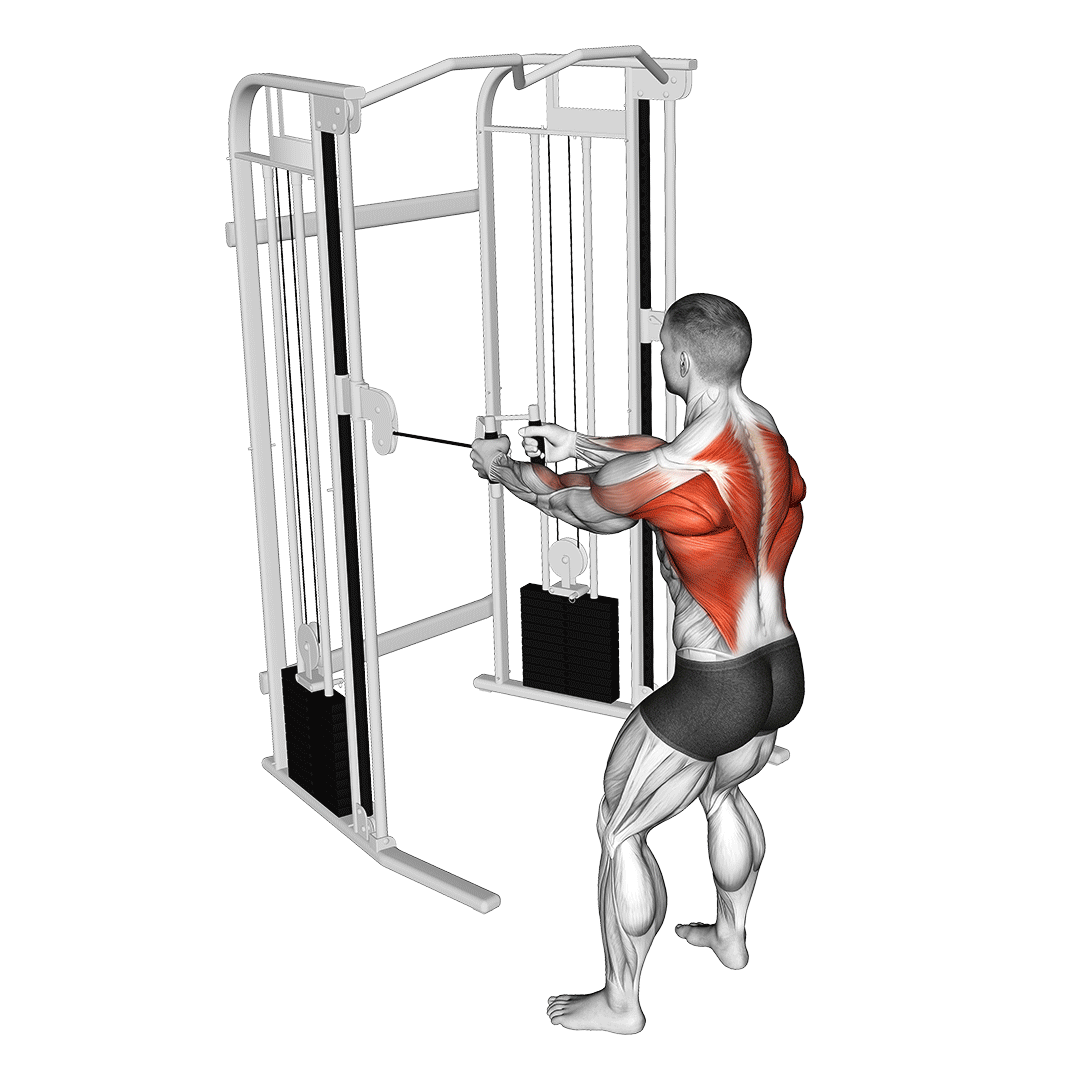
The standing variation allows for a more adjustable angle of resistance and a somewhat lesser risk of hinging the torso forwards, as the legs may be used for additional stability.
When performing cable rows standing, ensure that the feet are set wider than shoulder-width apart and that no dynamic muscular recruitment in the legs or “cheating” of the repetition is present.
One-Handed Cable Machine Row
To correct a muscular imbalance, substitute with a more sports-specific exercise or otherwise create greater emphasis on one side of the back at a time - cable machine rows may be performed unilaterally.
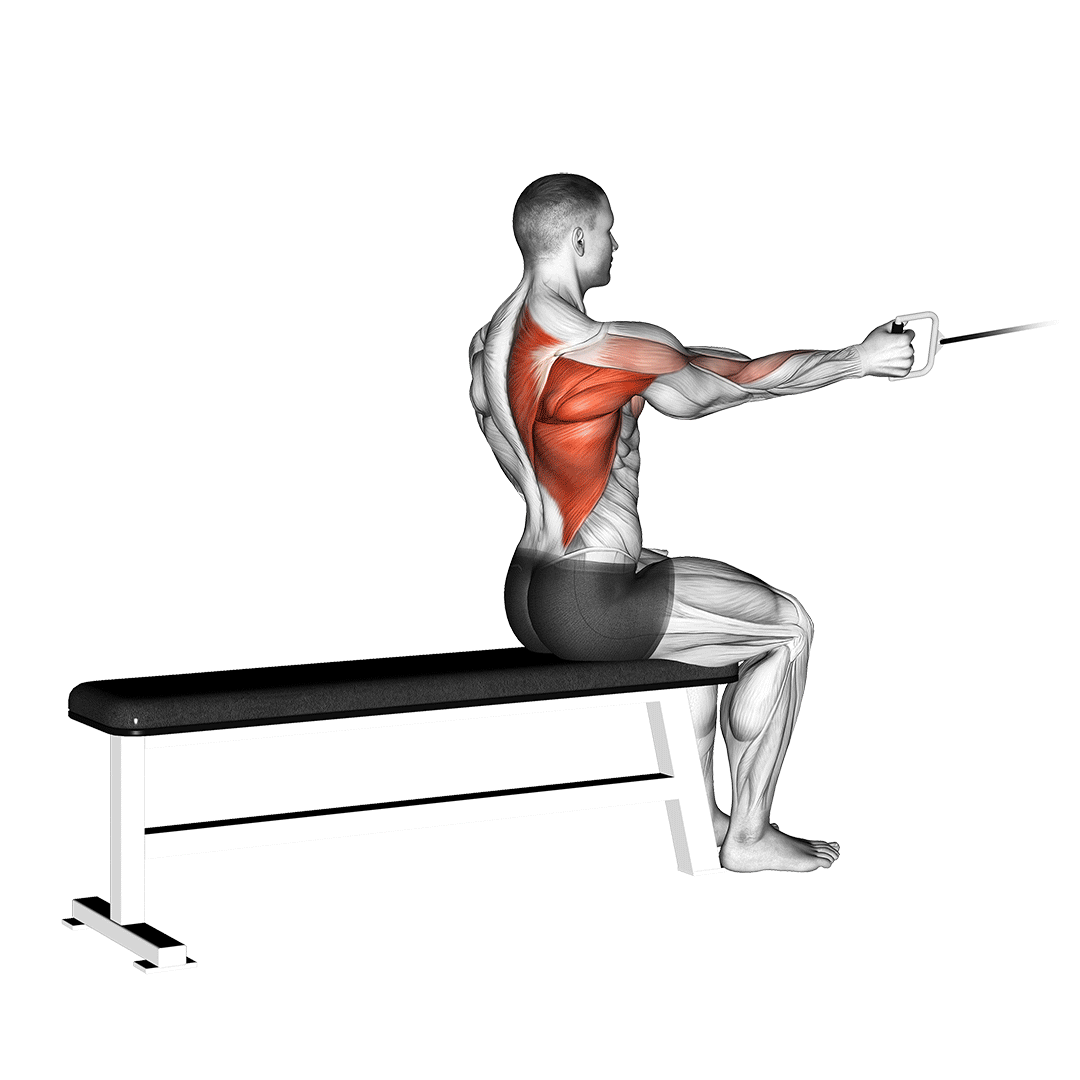
In order to do so, swap out the conventional bar with a single D handle attachment.
Performing the exercise in this way allows for the maximal amount of focus directed towards proper muscular contraction, trading in time and efficiency for higher quality repetitions.
Back Row Machine
Finally, if either type of cable machine row isn’t quite as strict or stable as you’d like, there is always the back row machine.
Substituting cable machine rows with machine back rows allows for a far more fixed movement pattern, somewhat greater loading capacity and specially-purposed pads that help stabilize and support the torso for better form.
Note that the back row machine is distinct from the standard aerobic rowing machine.
Where one involves the use of the core and legs, the back row machine is specifically meant to target the muscles of the back alone, and do not involve movement anywhere below the upper back.
Frequently Asked Questions (FAQ)
Can You Do Rows on a Cable Machine?
Yes - cable machine rows are much the same as the dedicated seated back row machine of the same name. The sole difference lies only in how the machine is adjusted.
Ensure that the pulley is set at around the same height as your diaphragm or lower chest for the ideal angle of resistance.
Should I Lean Back on Cable Rows?
Though there is some debate as to whether leaning slightly back is beneficial with cable rows, some evidence suggests that it allows for greater recruitment of specific back muscles like the latissimus dorsi and posterior deltoid heads.
Experiment with both a vertical and backwards-leaning torso orientation to see what feels most comfortable for you.
Why Don’t I Feel Rows in My Back?
If you don’t feel rows in your back, it is possible that you are either failing to correctly engage your back musculature or are performing the movement with grossly poor form.
Ensure that you are retracting your shoulder blades as you row the handle towards your torso, timing it so that the upper arms and elbows reach their full range of motion at the same time as your scapula is fully retracted.
References
1. Lorenzetti, Silvio, Romain Dayer, Michael Plüss, and Renate List. 2017. "Pulling Exercises for Strength Training and Rehabilitation: Movements and Loading Conditions" Journal of Functional Morphology and Kinesiology 2, no. 3: 33. https://doi.org/10.3390/jfmk2030033
2. Fenwick, Chad M J et al. “Comparison of different rowing exercises: trunk muscle activation and lumbar spine motion, load, and stiffness.” Journal of strength and conditioning research vol. 23,2 (2009): 350-8. doi:10.1519/JSC.0b013e3181942019

